Top 10 Types Of Survey Methods For Market Success
Survey methods are techniques used to gather data from people. They help businesses, researchers, and organizations understand customer behavior. Different types of survey methods exist, each serving specific purposes.
Choosing the right method is essential for accurate and reliable data. Some surveys focus on opinions, while others measure behaviors. Let’s explore the top 10 survey methods and their features.
What Are Survey Methods?
Survey methods are techniques used to collect data from a group of people to gather insights, opinions, or feedback. These methods help businesses, researchers, and organizations make informed decisions.
Features of Survey Methods
Surveys can be conducted online, via telephone, face-to-face, or through mail, depending on the target audience and research objectives.
1. Structured Questions
Surveys use predefined questions to ensure consistency and reliability in responses.
2. Wide Reach
They can collect data from large and diverse groups, making them scalable.
3. Quantitative and Qualitative Data
Surveys gather both numerical (ratings, statistics) and descriptive (opinions, suggestions) information.
4. Standardized Format
The structured approach ensures easy comparison and analysis of responses.
5. Cost-Effective
Online and automated surveys reduce costs compared to other data collection methods.
6. Anonymity and Confidentiality
Respondents can provide honest feedback without revealing their identity.
7. Real-Time Data Collection
Digital surveys offer instant data access for faster decision-making.
Survey Methods: Features and Advantages
Surveys are one of the most effective ways to gather data from a targeted audience. They help businesses, researchers, and organizations collect valuable insights to make informed decisions.
Below are different types of survey methods, their features, and how they are used in various industries.
1. Online Surveys
Features
- Conducted via websites, emails, or social media.
- Cost-effective and easy to distribute.
- Provides real-time data collection.
Uses
Online surveys are widely used by businesses for market research, customer feedback, and product satisfaction analysis. They allow companies to collect large amounts of data quickly and efficiently. With online tools and automation, businesses can analyze trends and make data-driven decisions faster.
2. Telephone Surveys
Features
- Conducted over the phone.
- Allows direct interaction with respondents.
- Higher response rates than emails.
Uses
Telephone surveys are common in political polling, healthcare research, and customer service feedback. Companies use them to gather opinions on services, brand awareness, and product improvements. The ability to clarify questions and responses in real-time makes them highly effective.
3. Face-to-Face Surveys
Features
- Conducted in person.
- Allows for detailed questioning.
- Provides immediate feedback.
Uses
Face-to-face surveys are ideal for in-depth research and qualitative insights. They are commonly used in academic research, clinical trials, and consumer behavior studies. Businesses use them for product testing, where direct observations and feedback are critical.
4. QR Code Surveys (Replacing Mail Surveys)
Features
- Conducted by scanning a QR code using a smartphone.
- Provides instant access to the survey.
- Increases response rates with quick participation.
Uses
QR code surveys are increasingly used in retail, restaurants, and events. Customers can scan a QR code at checkout, on product packaging, or at event booths to provide instant feedback. This method is convenient, reduces survey fatigue, and ensures real-time data collection without requiring lengthy forms or internet browsing.
5. Mobile Surveys
Features
- Conducted via mobile apps or SMS.
- Quick and convenient for users.
- High response rates.
Uses
Mobile surveys are ideal for collecting on-the-go feedback. Businesses use them for customer satisfaction, event evaluations, and service reviews. Mobile apps also integrate surveys seamlessly, encouraging user participation with push notifications and reminders.
6. Social Media Surveys
Features
- Conducted on platforms like Facebook, Twitter, and LinkedIn.
- Engaging and interactive.
- Allows for instant responses.
Uses
Brands use social media surveys to gauge audience interests, preferences, and engagement. They are effective in brand strategy, advertising research, and product development. Businesses leverage social polls, comment-based questions, and interactive posts to gain consumer insights.
7. Paper Surveys
Features
- Traditional method using printed forms.
- Useful in locations with no internet access.
- Time-consuming data collection.
Uses
Paper surveys are still used in hospitals, schools, and rural areas where digital access is limited. They are effective for collecting patient feedback, student evaluations, and field research data. They also provide tangible documentation for future reference.
8. Kiosk Surveys
Features
- Conducted on touchscreen kiosks in public places.
- Easy to use and accessible.
- Provides immediate data collection.
Uses
Retail stores, hotels, and airports use kiosk surveys to measure customer experience and satisfaction. These surveys are placed at exits or key locations where customers can quickly provide feedback. Businesses use them to improve service quality and streamline operations.
9. Panel Surveys
Features
- Uses a pre-selected group of respondents.
- Conducted over time for long-term data collection.
- Provides high-quality insights.
Uses
Market researchers and businesses use panel surveys to track changes in consumer behavior, brand perception, and industry trends. By maintaining a group of respondents over time, they can analyze patterns and long-term market dynamics.
10. Focus Group Surveys
Features
- Conducted in small groups.
- Involves open discussions.
- Provides deep insights.
Uses
Focus groups are widely used for new product testing, advertising research, and customer experience studies. A moderator guides discussions to explore participants’ opinions, emotions, and preferences. This method helps businesses develop more effective marketing strategies and user-friendly products.
How to Choose the Right Survey Method?
Selecting the right survey method is crucial to gathering accurate, meaningful, and actionable insights. The best method depends on several factors, including your target audience, budget, and the level of data accuracy required. Below are key considerations to help you choose the most effective survey approach.
1. Target Audience: Who Are You Surveying?
Understanding your audience is the first step in selecting a survey method. Ask yourself:
- Are you surveying customers, employees, or a general population?
- Do they prefer online communication, or are they more responsive to face-to-face interactions?
- Are they tech-savvy and comfortable using digital platforms?
2. Budget: Cost Considerations
Different survey methods have varying costs. Your budget will determine which method is feasible.
- Online surveys (email, social media, website pop-ups) are the most cost-effective, requiring minimal investment.
- Phone surveys are moderately priced but may require hiring call agents.
- Face-to-face surveys (focus groups, street interviews) tend to be the most expensive due to labor, transportation, and logistical costs.
If you’re working with a limited budget, digital surveys are the best option, offering scalability at a lower cost.
3. Data Accuracy: Reliability of Results
The quality of the responses you collect depends on how the survey is conducted. Some methods are more reliable than others.
- Face-to-face surveys allow for deeper insights, as researchers can observe body language and clarify questions in real time.
- Online and email surveys provide a larger sample size but may suffer from lower response rates and less engagement.
- Phone surveys can be effective but risk bias if respondents feel rushed.
For highly accurate data, use mixed methods, such as combining online surveys with follow-up phone interviews for clarification.
Conclusion
Different types of survey methods help businesses collect data effectively. Choosing the right method ensures better decision-making and market success. Each method has unique features and benefits. Use the one that best suits your research needs.
Frequently Asked Questions? (FAQs)
What Is The Most Effective Survey Method?
Online surveys are the most effective due to their convenience and cost-effectiveness.
How Do You Determine The Sample Size For A Survey?
Sample size is determined by factors like the population size, margin of error, confidence level, and variability. Larger samples provide more accurate results but can be more costly and time-consuming.
How Do You Ensure Survey Results Are Reliable?
Ensuring reliability involves designing clear, unbiased questions, using random sampling, and testing the survey on a small group before full distribution to identify any issues with clarity or bias.
What Are SMS Surveys?
SMS surveys are sent via text messages, allowing businesses to gather quick responses. They are effective for short, simple surveys with high response rates.
Enhance Patient Care and NABH Compliance with LazyMonkey
LazyMonkey is your all-in-one solution for improving patient care, retaining more patients, and meeting NABH standards. Our powerful QR-based feedback tool enables you to capture real-time insights from patient feedback, discharge surveys, staff and doctor evaluations, and clinical research, while also streamlining inter-departmental communication.
Transform your healthcare facility today - reach out to us at [email protected], or request a demo here!
Elevate Your Restaurant Experience with LazyMonkey
LazyMonkey’s QR-based feedback system helps you gather real-time insights from customers, track satisfaction levels, and enhance the dining experience. Get instant feedback on your menu, service, and ambience, and make data-driven improvements to boost repeat customers and reviews.
Improve your restaurant today – reach out to us at [email protected], or request a demo here!
Empower Student Engagement and Campus Improvement with LazyMonkey
LazyMonkey offers a seamless way to gather student feedback, track satisfaction, and enhance campus life. From course evaluations to dorm feedback, our QR-based solution makes it easy to capture valuable insights and improve student retention.
Upgrade your university experience – contact us at [email protected], or request a demo here!
Streamline Feedback and Drive Performance Across Your Enterprise/Franchise with LazyMonkey
Whether you manage one or multiple locations, LazyMonkey’s QR-based feedback system helps you gather real-time employee and customer feedback. Improve operational efficiency, track satisfaction, and make data-driven decisions to enhance brand consistency and growth.
Transform your franchise today – reach out to us at [email protected], or request a demo here!
Enhance Customer Satisfaction and Service Standards in Banking with LazyMonkey
LazyMonkey empowers banks to capture real-time feedback from clients across branches. Improve customer experience, assess service quality, and ensure regulatory compliance with our QR-based solution, helping you retain clients and meet banking standards.
Elevate your bank’s customer care – contact us at [email protected], or request a demo here!
Boost Customer Engagement and Mall Satisfaction with LazyMonkey
LazyMonkey’s QR-based feedback tool enables you to collect feedback from shoppers, track satisfaction, and enhance the mall experience. Gather insights on store services, cleanliness, and entertainment to create an unmatched customer journey.













